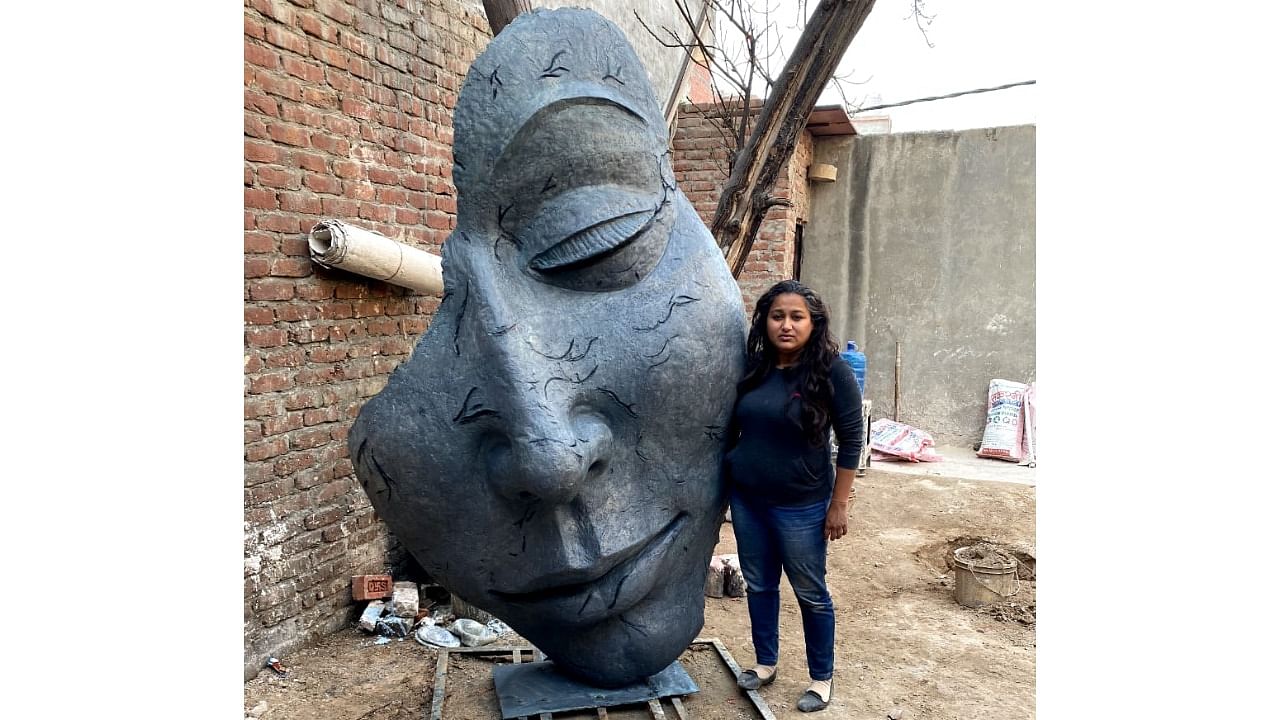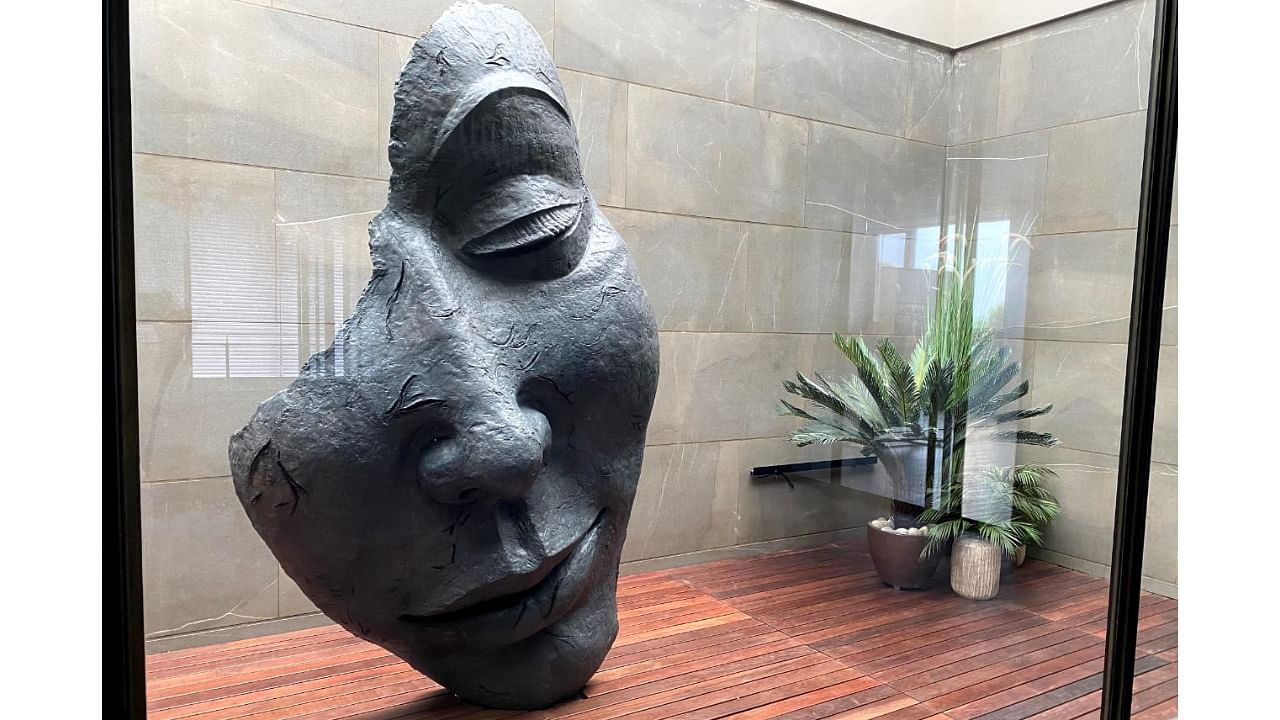

Aditee Garg's sculptures adorn the Kartarpur Corridor connecting the Dera Baba Nanak shrine in India to Gurudwara Darbar Sahib in Pakistan.
Her 13 sculptures at the historic Indo-Pak corridor are monumental in size, with the smallest being 10 feet high and others ranging from 40 feet to 50 feet.
When asked if she faced any challenges while working on the massive sculptures in marble and assorted metal, she opened up about the general assumptions regarding women sculptors.
"It is assumed that women cannot handle huge sizes. That's a historical truth, bolstered by the presence of only a handful of women in the field. Even after I was selected to work for the Kartarpur Corridor, some officials openly wondered if I would be able to handle more-than-life-size sculptures," says Garg.
Garg doesn't treat it as a deterrent but as an amusing distraction. She is content at having reclaimed her calling after a few years doing a corporate job and only wishes to continue creating sculptures with "emotions and energy."
Garg, whose other works are currently on display in an exhibition, Moulding Thoughts, at The Lodhi in New Delhi, hosted by Apparao Galleries, is an integral part of India's art heritage. However, the 44-year-old started with an MBA in finance, followed by a stint at a prominent bank before destiny caught up and steered Garg towards her passion.
The exhibition gives an idea of why it would have been a pity for Garg to have not quit banking for the sake of the arts.
The most distinctive feature of Garg's works on display at The Lodhi is the artist's modernist vision that comes through her mature use of the negative space, the absences like a patch of silence in a movie or a pause in a musical note.
"I've always had a deep desire to show what is missing, what is less… because life is not just black and white but has all the 50 shades of grey in between," she said.
The artist works across various media—clay, marble, granite and bronze, creating figurative, abstract and semi-abstract works.
It's the same thought process that makes her Kartarpur Corridor sculptures stand out, celebrating the Sikh icons and their valour. One of those works is a salute to the religious syncretism of India; it shows the Ek Omkar symbol above a lotus flower.
"Even while doing the nine-to-five job, I was clear that I would eventually come to the arts," said New Delhi-based Garg.
She finally found her mojo in sculpture by training under senior artist Rameshwar Broota at New Delhi's Triveni Kala Sangam.
"I was learning painting under Mr Broota when he told me that I had a 3D vision and would do better working outside the studio. He sent me outdoors to work, and after a week, he asked me what I felt.
I told him, 'I don't know what painting is. I want to die as a sculptor,' " said Garg. She trained for four years under Broota and acquired a two-year diploma in sculpture from the Banaras Hindu University.
(The writer is a New Delhi-based journalist, editor and arts consultant.)